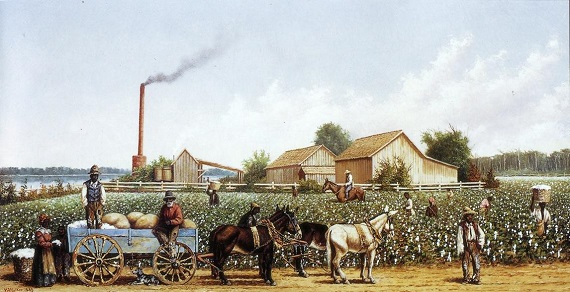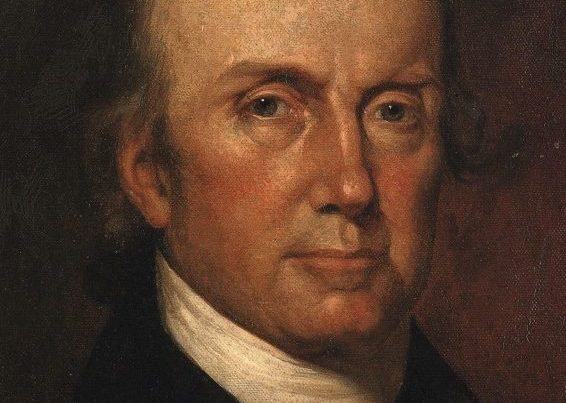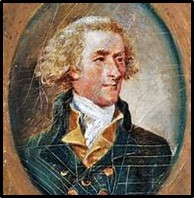This essay is the introduction to Larry Koger’s book, Black Slaveowners: Free Black Slave Masters in South Carolina, 1790-1860.
Black slaveholding is a historical phenomenon which has not been fully explored by scholars. Graduate students of history are often surprised to learn that some free blacks owned slaves. Even historians are frequently skeptical until they discover the number of black masters and the number of slaves owned by them. To many readers, slavery was an institution exclusively utilized by white slaveowners. The fact that free blacks owned slaves has been lost in the annals of history.
Yet at one time or another, free black slaveowners resided in every Southern state which countenanced slavery and even in Northern states. In Louisiana, Maryland, South Carolina, and Virginia, free blacks owned more than 10,000 slaves, according to the federal census of 1830.
Many of the black masters in the lower South were large planters who owned scores of slaves and planted large quantities of cotton, rice, and sugar cane. In 1860, for example, Auguste Donatto, a free colored planter of St. Landry Parish in Louisiana, owned 70 slaves who worked 500 acres of land and produced 100 bales of cotton. About 600 miles to the east of Louisiana in the county of Sumter, South Carolina, William Ellison, a free colored planter, used the labor of 70 slaves to cultivate 100 bales of cotton in 1861. In South Carolina, Robert Michael Collins and Margaret Mitchell Harris used their slaves to till the soil of Santee Plantation and grew 240,000 pounds of rice in 1849. But the majority of the large colored planters lived in Louisiana. In 1860, Madame Ciprien Ricard and her son Pierre Ricard, free mulattoes of Ibeville Parish, owned 168 slaves. The joint operation of mother and son used the labor of slaves to produce 515 hogsheads of sugar in 1859. Yet not all of the black masters were planters or from the South. In fact, the city of New York had eight black slaveowners who owned 17 slaves in 1830. In short, the institution of black slaveowning was widespread, stretching as far north as New York and as far south as Florida, extending westward into Kentucky, Mississippi, Louisiana, and Missouri.
One may ask, where did these free black masters come from? Many of them were former slaves who were manumitted because of their kinship ties to whites, while others were emancipated for meritorious military duty, faithful service, or saving a life, as well as other reasons. But the majority of the black masters never knew the dehumanization of slavery because they had been born of free black parents. However, the ranks of the slave masters included not only free blacks but also nominal slaves. In many instances, blacks who were not legally emancipated assimilated into the free black community and later became slaveowners. By and large, the community of black masters came from a diverse background which included persons of free and slave status.
Once freed, the black masters obtained slaves by various methods. Many of the colored slaveowners inherited slaves from black relatives as well as white kinsfolk. A few black masters owned slaves in West Africa and transported their slaves to the New World. But the majority of the black slaveholders used their own industry and worked as artisans, entrepreneurs, and even as unskilled laborers to obtain the capital to buy slaves.
The acquisition of slaves by Afro-Americans was the result of various factors. Many free blacks bought relatives who were slaves to white masters. Quite often, when marriages occurred between free blacks and slaves, the free spouse attempted to buy the freedom of the slave spouse and the children. Also, marriages between slaves occasionally saw one spouse emancipated while the other remained in bondage. Consequently, the former slave tried to obtain the liberty of loved ones in servitude.
Some of the slave purchases were caused not by the bond of kinship but by humanitarianism. Free blacks of benevolent persuasion sometimes used their own money to purchase slaves with the intent of emancipating them. However, many black masters did not intend to manumit their slaves and viewed the institution of slavery as a source of labor to be exploited for their own benefit. Indeed, free blacks not only used the labor of slaves to till the soil of their farms and plantations but also purchased slaves to work in their businesses as skilled and unskilled laborers. Others bought slaves to be hired out. These black masters hired out their slaves to non-slaveowners and appropriated the proceeds from the labor of slaves to help support themselves. Whatever the reasons may have been to stimulate free blacks to acquire slave property, the system of American slavery was a universal institution in which even Afro-Americans became slaveowners and occasionally ascended to the ranks of large slaveowning planters.
Because the history of black slaveholding has been almost ignored by scholars, the literature on the slaveholding of free blacks is lacking in quantity. Most of the studies examining black slaveowning are written in the form of articles, although numerous other works mention the existence of black masters. So far as the author is aware, the subject of black slaveholding has not been explored on a general or a statewide level in a monograph. Such studies are needed, and it is hoped that this book will, so far as South Carolina is concerned, supply this need.
Although South Carolina may not have been the typical Southern state where free blacks owned slaves, it provided the unique setting of being the bridge between the Upper and the Deep South, thus embracing elements of both societies. In the Palmetto State, there were blacks who owned scores of slaves and large tracts of land like the black slaveowners of Louisiana. Primarily, however, South Carolina’s black masters were small slaveholders who owned one or two slaves, like the black slaveowners of Maryland and Virginia. Many of these small slaveholders owned family members who could not be emancipated because the state legislatures prohibited private manumission unless the freed slave left the state.
This book is a study of black slaveholders who were diverse in background and character. Many of the black slaveowners of South Carolina were former slaves who rose from the shackles of bondage to the ranks of slave masters. Still others were one or two generations removed from slavery, and their parents and grandparents were slave masters who passed their human chattel from parent to child. Yet the ranks of the colored masters were not all from the elite class of black society. In the Palmetto State, free blacks who worked as draymen, stable keepers, and washerwomen acquired the money to purchase slaves. Within the community of slaveholders, there were free blacks who bought slaves for humanitarian reasons and broke the laws of South Carolina to maintain the freedom they granted their slaves. Yet black slaveholding in South Carolina was primarily a commercial venture, and the attitudes and actions of colored masters appeared to be similar to those of the white slaveowners. In essence, free black masters embraced many of the attitudes of the white community even while they remained on the fringe of the society.







I read some portions of your book. My friend had a copy in his library. It sounded interesting, so I have decided to purchase a copy. I knew that some Negroes – who were free – owned or managed slaves, but I hadn’t know it was wide spread. There were white slaves at the colonies beginning, because of unpaid debt, and that is glossed over by history. Its a very complicated subject and little is discussed in Biblical circles except in reviewing history 5,000 years ago. Thanks for doing the research.
Frank J. Verderber BSGS/ASCT
RRussell, Massachusetts
Did a family by the name of Smalls own slaves? I believe the resided in Myrtle Beach,SC.